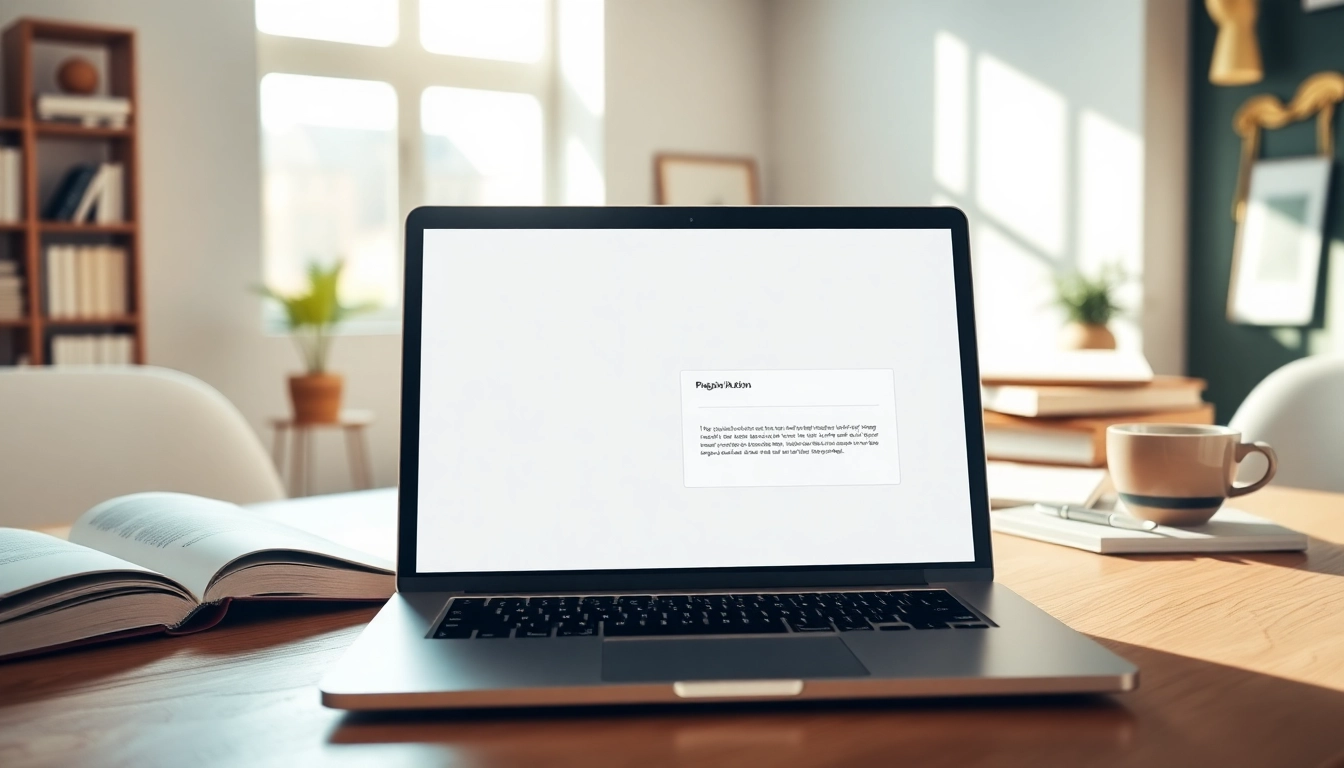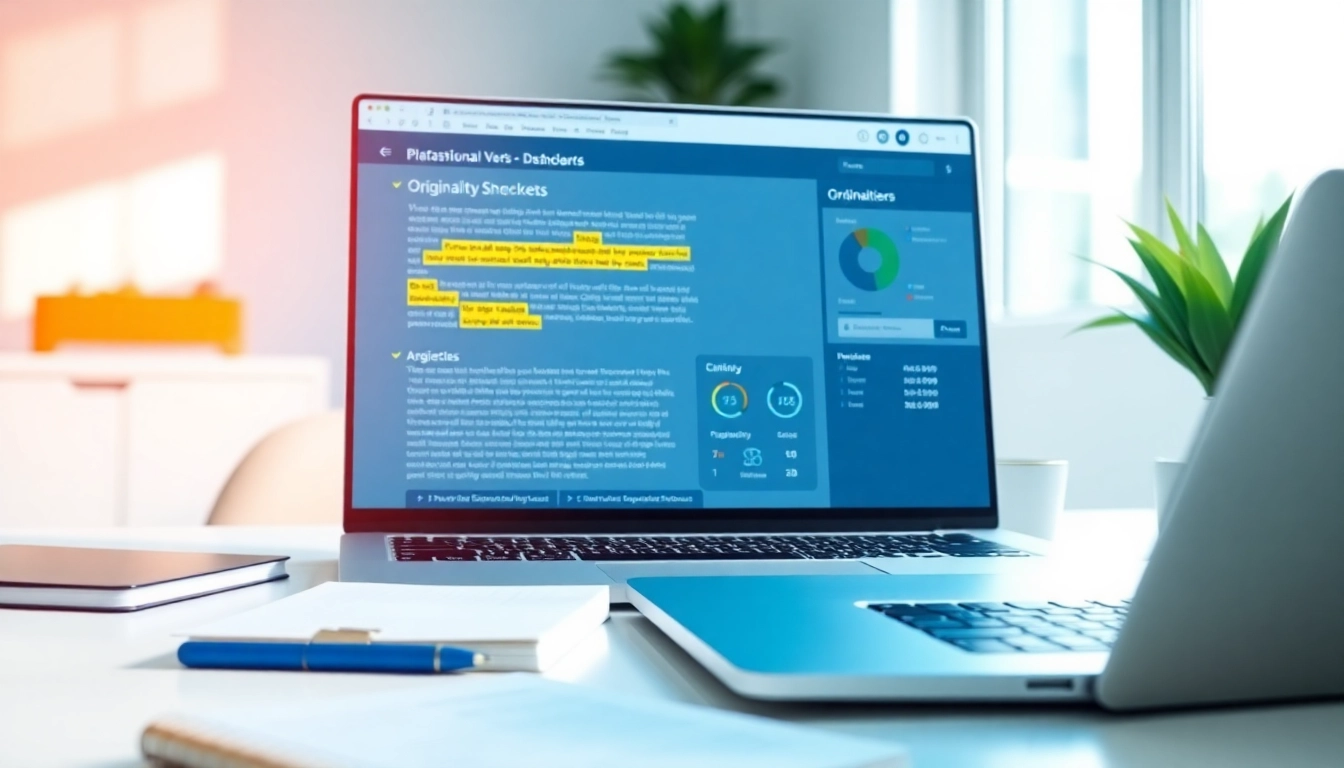Understanding Plagiarism Detectors
In an increasingly digitized world, the concept of plagiarism has taken on new significance. As writers, educators, and students, the integrity of our content is of utmost importance. One essential tool in maintaining this integrity is the plagiarism detector. These tools serve as guardians against the unintentional (or intentional) misappropriation of ideas, phrasing, and overall intellectual property. As we delve deeper into this article, we will uncover what plagiarism detectors are, how they function, and why they are indispensable in today’s academic and professional landscapes.
What is a Plagiarism Detector?
A plagiarism detector, also known as a plagiarism checker, is a software tool designed to identify instances of plagiarism in a submitted text. By comparing the text against a comprehensive database of existing works—ranging from academic articles and publications to web pages—these tools can highlight overlapping phrases, similarities in structure, and direct copying of content. Various models of plagiarism detectors are available, ranging from free tools with basic functionalities to advanced software with A.I.-powered algorithms that can identify nuanced instances of potential plagiarism.
The Importance of Academic Integrity
Academic integrity is foundational to the credibility of educational institutions and the value of degrees attained therein. Upholding principles of honesty and integrity fosters a culture of trust among peers and instructors. Plagiarism is considered a serious offense in academic circles, often leading to severe consequences such as a failing grade, academic probation, or even expulsion. Beyond academic settings, plagiarism impacts professional goodwill and can damage a writer’s reputation. Thus, utilizing plagiarism detectors becomes critical for fostering a respectful and ethical environment in academia and beyond.
How Plagiarism Detectors Work
Plagiarism detectors operate by employing sophisticated algorithms that analyze the submitted text and compare it against vast databases of known works. The fundamental steps are:
- Text Parsing: The tool breaks down the text into smaller segments to analyze for similarities.
- Database Comparison: The segments are then compared against a repository of existing documents, journals, books, and even online content.
- Similarity Index: Detectors generate a similarity index, indicating the percentage of text that matches other sources.
- Report Generation: Finally, a report is produced that outlines instances of potential plagiarism, including links to the original content, allowing users to examine the context of the matches.
Common Features of Top Plagiarism Detectors
Real-Time Analysis of Text
The ability to conduct real-time analysis is a hallmark of advanced plagiarism detection tools. Users can enter text directly into the system, receive instant feedback, and revise content accordingly. This feature is particularly valuable in educational settings where timely submission is critical.
Comprehensive Database Access
The effectiveness of any plagiarism detector largely hinges on the breadth of its database. Top-tier detectors have access to extensive and continually updated repositories that encompass academic publications, books, online articles, and more. This comprehensive access ensures that the detector can identify a wide array of potential sources from which text may have been copied.
User-Friendly Interfaces
A user-friendly interface enhances the usability of plagiarism detectors, making them more accessible to a broader audience. Intuitive design features, such as drag-and-drop uploads, clear navigation paths, and easy-to-understand results, empower users—from students to professionals—to utilize these tools effectively without requiring extensive technical knowledge.
Selecting the Right Plagiarism Detector for Your Needs
Assessing Accuracy and Reliability
When selecting a plagiarism detector, it is crucial to assess its accuracy and reliability. A tool that provides false positives or missed matches can lead to unnecessary stress and academic repercussions. Look for detectors with a proven track record and favorable user reviews detailing their efficacy in identifying copied content.
Free vs. Paid Plagiarism Detectors
While there are several free plagiarism detectors available, they often come with limitations such as restricted database access or less sophisticated algorithms. Paid tools frequently provide more robust features, including comprehensive database access, detailed reports, and customer support. Users must weigh their needs against budget constraints when deciding between free versus premium services.
User Reviews and Testimonials
User reviews and testimonials serve as essential indicators of a tool’s credibility and effectiveness. Seeking insights from peers or reading online reviews can help prospective users identify which tools best meet their requirements. Recommendations from individuals already utilizing these tools can provide practical perspectives on real-world performance.
Best Practices for Using Plagiarism Detection Tools
Integrating Detectors into Writing Processes
Integrating plagiarism detection tools into the writing process enhances content originality and academic integrity. Writers should consider using these tools at various stages — from the drafting phase to final revisions — ensuring that unintentional plagiarism is addressed before submission. Establishing a routine for checking work can significantly reduce the likelihood of errors.
Understanding Report Results
After running a text through a plagiarism detector, understanding the report results is crucial. Many reports will provide a similarity score, which indicates how much of the content matches other sources. A higher percentage typically necessitates a thorough review and possible revision of the text. Users should focus on highlighted sections, investigate the sources, and decide how to address the matched content appropriately.
Taking Action on Detected Plagiarism
When plagiarism is detected, it is imperative to take appropriate action. This may involve rephrasing sections, correctly citing sources, or removing borrowed content altogether. Addressing these issues not only improves the integrity of the work but also helps writers improve their skills and understanding of source attribution.
Future Trends in Plagiarism Detection Technology
AI and Machine Learning Innovations
The future of plagiarism detection technology is interwoven with advancements in artificial intelligence and machine learning. These technologies enable detectors to better understand context, recognizing paraphrased text and intricate patterns that may signify plagiarism. As AI evolves, it will enhance the accuracy and effectiveness of detection algorithms, thereby minimizing false positives and negatives.
Improved User Experience and Accessibility
Future plagiarism detectors are likely to prioritize user experience, making them even more intuitive and accessible. Enhanced mobile versions and user support features, along with refined interfaces, will ensure that individuals at all levels of technical expertise can navigate these tools effortlessly. The emphasis will be on removing barriers to use, thereby encouraging widespread adoption in educational and professional settings.
Global Standards in Academic Honesty
As plagiarism detection technology evolves, so too will standards for academic honesty on a global scale. Institutions may adopt universal benchmarks for what constitutes plagiarism, informed by advancements in detection technology. This evolution could lead to revised academic policies and greater emphasis on training students regarding ethical writing practices, ultimately reinforcing the value of originality across all disciplines.




